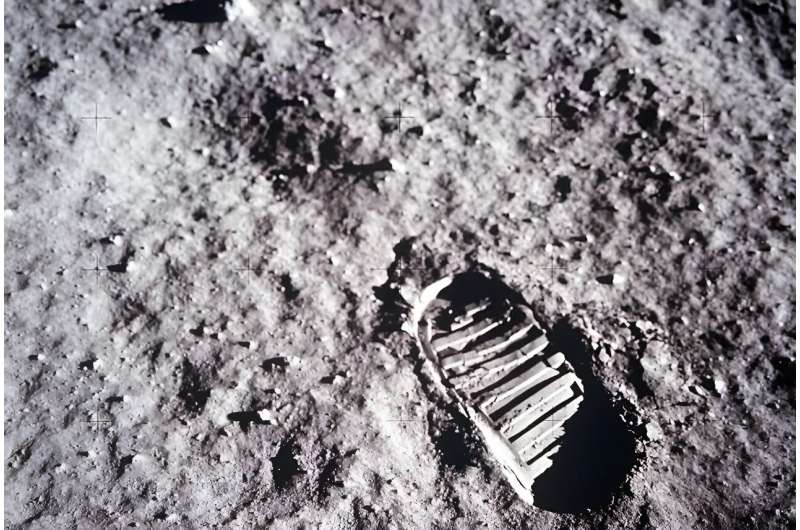This article has been reviewed according to Science X's editorial process and policies. Editors have highlighted the following attributes while ensuring the content's credibility:
fact-checked
trusted source
proofread
What could we build with lunar regolith?

It has often been likened to talcum powder. The ultra fine lunar surface material known as the regolith is crushed volcanic rock. For visitors to the surface of the moon it can be a health hazard, causing wear and tear on astronauts and their equipment, but it has potential. The fine material may be suitable for building roads, landing pads and shelters. Researchers are now working to analyze its suitability for a number of different applications.
Back in the summer of 1969, Armstrong and Aldrin became the first visitors from Earth to set foot on the moon. Now, 55 years on and their footprints are still there. The lack of weathering effects and the fine powdery material have held the footprints in perfect shape since the day they were formed. Once we—and I believe this will happen—establish lunar bases and even holidays to the moon those footprints are likely still going to be there.
There are many challenges to setting up permanent basis on the moon, least of which is getting all the material there. I've been embarking on a fairly substantial home renovation over recent years and even getting bags of cement and blocks to site has proved a challenge. While I live in South Norfolk in UK (which isn't the easiest place to get to I accept) the moon is even harder to get to. Transporting all the necessary materials over a quarter of a million kilometers of empty space is not going to be easy. Teams of engineers and scientists are looking at what materials can be acquired on site instead of transporting from Earth.
The fine regolith has been getting a lot of attention for this very purpose and to that end, mineralogist Steven Jacobsen from the Northwestern University has been funded by NASAs Marshall Space Flight Center to see what it back be used for. In addition NASA has partnered with ICON Technology, a robotics firm to explore lunar building technologies using resources found on the moon. A key challenge with the lunar regolith though is that samples can vary considerably depending on where they are collected from. Jacobsen is trying to understand this to maximize construction potential.
ICON were awarded the $57.2 million grant back in November 2022 to develop lunar construction methods. Work had already begun on space based construction, again from ICON in their Project Olympus. This didn't just focus on the moon though, Mars was also part of the vision to create construction techniques that could work wherever they were employed.
3D printing may play a part in the lunar construction approach. It is already being used by ICON and others like them to build houses here on Earth. Employing 3D technology on the moon using raw lunar material could be one solution.
One of the first priorities would be to establish a suitable permanent landing area on the moon. Without it, every time a lander arrives, the fine regolith will get kicked up and disturbed and may very well play havoc with other equipment in the vicinity. The particles can be quite sharp too so it may be quite abrasive on equipment.
Provided by Universe Today





















